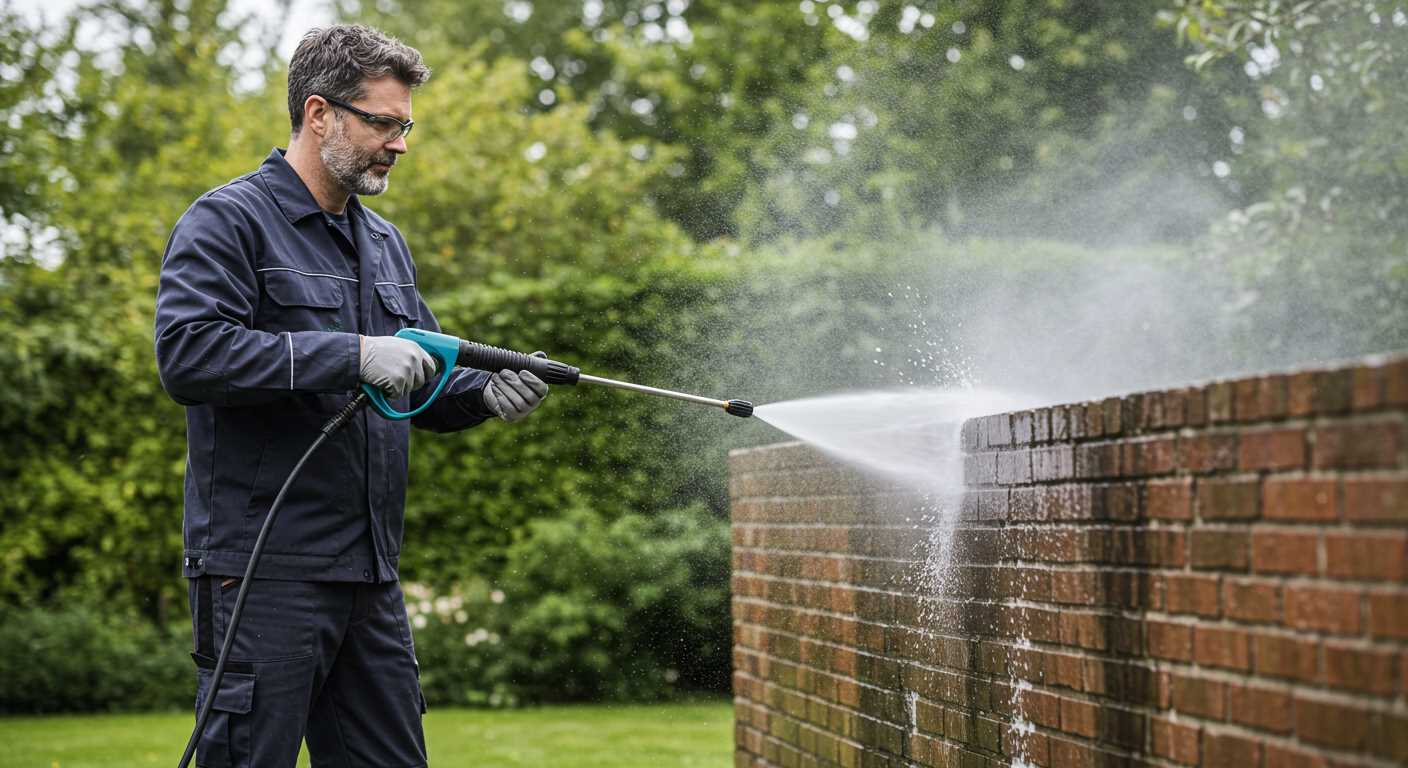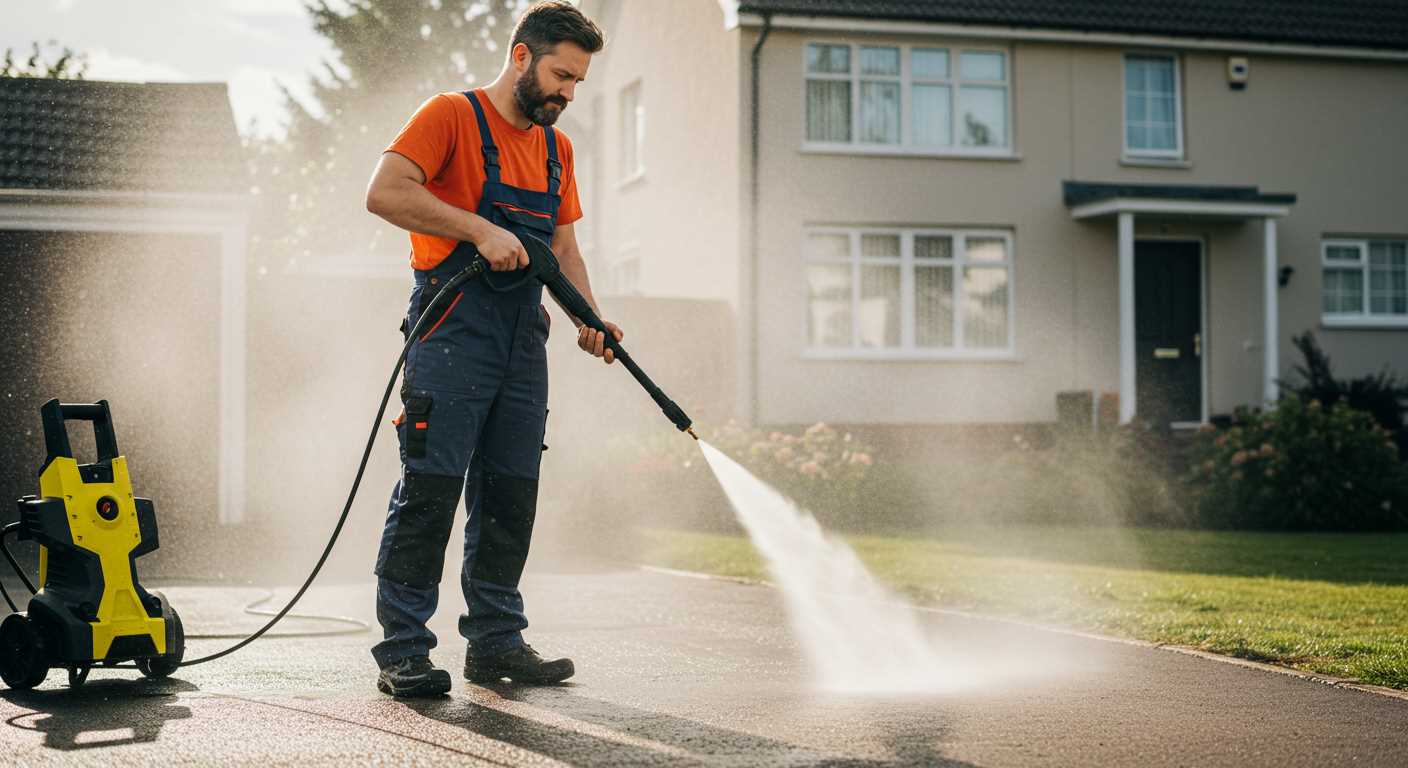



For those seeking to maintain their outdoor spaces, I recommend looking into the Sun Joe SPX3000. This model combines versatility and performance, making it an ideal solution for various cleaning tasks from patios to vehicles. With a powerful 14.5-amp motor delivering up to 2030 PSI, it can effortlessly tackle grime and dirt.
Another solid option is the Karcher K1700, which offers excellent reliability and ease of use. Its compact design, coupled with a 1700 PSI output, makes it perfect for lighter cleaning jobs while still providing enough power for medium-duty tasks. The Quick Connect system enhances convenience by allowing quick attachment changes.
If you require portability without sacrificing power, consider the Ryobi RY14122 model. Its electric motor is both efficient and powerful, producing 1600 PSI. The lightweight design and built-in wheels make transportation easy, catering to those who need mobility in their cleaning routines.
For larger properties and tougher jobs, I suggest the Generac 6882. It features a gas engine producing 3200 PSI, ensuring it handles heavy-duty tasks with ease. This model is suitable for driveways, siding, and more extensive clean-up jobs, making it a worthy investment for serious users.
Choosing an appropriate cleaning device hinges on evaluating your specific needs and the frequency of use. Each of these suggestions offers unique benefits that fit different scenarios, ensuring that your outdoor spaces remain pristine.
Key Features to Consider When Selecting a Pressure Cleaning Device
Focus on the pressure output, measured in PSI (pounds per square inch). For light tasks, such as cleaning patios or garden furniture, 1300-1900 PSI suffices. For more demanding jobs like stripping paint or tackling stubborn grime, look for models offering 2400 PSI or above.
Next, explore the flow rate, indicated in GPM (gallons per minute). A higher GPM efficiently tackles cleaning tasks. Devices with a rating of 1.5 GPM or more strike a good balance between water use and cleaning capability.
The type of motor also plays a significant role. Electric machines are quieter, lighter, and better for smaller jobs. Conversely, gas-powered units provide more power and portability for extensive tasks but come with increased noise and maintenance requirements.
Evaluate the cleaning solution system. Some models feature integrated detergent tanks, while others require separate attachments. Opt for those that allow for easy switching between soap and water for flexibility in cleaning.
Accessibility of attachments matters greatly. Look for options that come with various nozzles and accessories. A rotating nozzle is excellent for stubborn dirt, while a wide-angle spray is better for delicate surfaces. Having a variety makes the equipment versatile.
Portability and storage also affect usability. Consider devices with wheels for ease of movement and lightweight designs. Additionally, check for onboard storage for cords and accessories to keep everything organised.
Finally, pay attention to customer reviews and warranty information. Reliable support from the manufacturer indicates quality and a commitment to customer satisfaction. Look for models with solid warranties and positive feedback on performance and durability.
Comparing Electric vs Petrol Power Cleaners for Domestic Use

For effective cleaning, I recommend opting for electric models if convenience and ease of use are your priorities. They are quieter, lighter, and maintenance-free compared to petrol variants. Suitable for small to medium-sized tasks, these machines usually plug directly into standard outlets, making them ideal for residential applications.
Advantages of Electric Models
- Noise Levels: Significantly quieter during operation.
- Maintenance: Minimal upkeep required; no fuel or oil checks.
- Portability: Lightweight and easier to manoeuvre.
- Cost: Generally more affordable upfront and running costs are lower.
- Versatility: Adequate for most residential tasks, from washing cars to cleaning patios and decking.
Benefits of Petrol Machines
- Power: Higher pressure ratings for tougher chores, like cleaning driveways and larger surfaces.
- Mobility: No cords to manage, allowing access to remote areas.
- Durability: Built for more frequent heavy-duty use, suitable for professionals with demanding cleaning needs.
- Run Time: Longer operational periods without needing to recharge.
Consider your specific cleaning needs, potential frequency of use, and storage space. For general household tasks, an electric cleaner is likely sufficient; however, for extensive outdoor activities, a petrol option may provide the additional power required.
Top-rated models for different budgets

For those seeking an economical option, the Sun Joe SPX3000 provides excellent value with a 14.5-amp motor, producing up to 2030 PSI and 1.76 GPM. It’s lightweight, easy to manoeuvre, and comes with a variety of attachments to customise cleaning tasks.
In the mid-range category, consider the Greenworks GPW1501. This electric variant delivers 1500 PSI alongside a 1.2 GPM flow rate, featuring a compact design ideal for light to moderate jobs like patios and vehicles. Its 20-foot high-pressure hose ensures flexibility during use.
For a premium choice, the Karcher K5 Premium excels, featuring a water-cooled induction motor for superior longevity. With 2000 PSI and 1.4 GPM, it includes a detachable detergent tank and an adjustable spray wand, making it suitable for a variety of applications, from stubborn grime on driveways to delicate surfaces.
If you’re leaning towards a petrol-powered solution, the Honda-powered Champion 3200 PSI model offers a robust performance, geared towards larger tasks such as cleaning decks and driveways. It has a reliable 224cc engine and a 2.4 GPM output, ensuring efficiency for tougher jobs.
Lastly, for those seeking portability, the Ryobi RY142300 is a lightweight electric unit that provides 2300 PSI and 1.2 GPM. Its compact frame and built-in handle make it easy to store and transport while still tackling moderate cleaning chores effectively.
Essential accessories to enhance your cleaning experience
Investing in a compatible foam cannon can significantly enhance the cleaning process. This tool allows for even distribution of detergent, creating a thick layer of foam that clings to surfaces, effectively breaking down grime and dirt before rinsing.
A telescopic wand is another valuable addition. It extends your reach, allowing you to clean hard-to-access areas without the need for ladders or scaffolding. This accessory is particularly helpful for multi-storey buildings or tall vehicles.
For detailing tasks, a scrub brush attachment is indispensable. It debates dirt and stains on surfaces like patios and driveways, ensuring a thorough clean. Selecting a brush with soft bristles prevents any scratching, making it suitable for various surfaces.
A rotating nozzle can be quite beneficial too. It enhances cleaning power by employing a spinning action that covers a larger area while using less water, leading to a more efficient wash.
Investing in a quality hose reel keeps your workspace tidy. It prevents tangles and damage, extending the lifespan of your hoses and ensuring they are easily accessible for future use.
If you plan on using your gear regularly, consider purchasing a surface cleaner attachment. This tool allows you to clean large flat areas quickly and uniformly without leaving streaks, saving time on extensive tasks like cleaning driveways and decks.
Lastly, protective gear such as gloves and goggles should not be overlooked. They provide safety against high-pressure water and cleaning agents. Ensuring personal safety enhances the overall experience of using your equipment.
Common maintenance tips for prolonging the life of your pressure cleaner

Regularly check and replace oil, particularly in petrol models, to ensure smooth operation. Use the manufacturer’s recommended type for optimal performance.
Inspect and clean filters frequently. A clogged filter can reduce efficiency and lead to overheating. Rinse or replace as necessary to maintain proper flow.
Store the unit in a dry location, away from harsh weather. Housing it in a sheltered space prevents rust and component degradation. Avoid leaving it outside for extended periods.
Utilise proper storage methods for hoses and attachments. Avoid kinks or sharp bends, which can lead to leaks or internal damage. Coiling hoses loosely will help maintain their integrity.
Regularly check for leaks in hoses and connections. Early detection allows for repairs before issues escalate, thus preventing permanent damage and costly replacements.
After each use, run clean water through the system to flush out detergent residues. This prevents build-up that can affect future operations and maintains the internal components.
During winter, ensure to drain all water from the machine and hoses to prevent freezing and cracking. Consider using antifreeze if storing in extreme conditions.
Periodically inspect the spray gun and nozzles for blockages. Clean them to ensure a consistent spray pattern and prevent damage to surfaces during use.
Follow manufacturer guidelines for regular professional servicing. This can identify potential issues before they lead to severe complications, saving time and costs in the long run.
Real user reviews: what to look for in customer feedback
When assessing user reviews for cleaning equipment, pay close attention to specific feedback regarding performance, reliability, and ease of use. Look for comments on pressure levels and how effectively they tackle stubborn dirt or grime. Feedback should highlight the model’s versatility, such as suitability for various surfaces, including patios, vehicles, and decks.
Key aspects to analyse in feedback
Assess mentions of durability and build quality. Users often share experiences about how well equipment withstands regular usage and adverse conditions. Look for consistent reports on materials used, particularly for hoses and connections, as these can greatly affect longevity.
Ease of assembly and operation is crucial in reviews. Customers should indicate how intuitive the setup process is and whether user manuals are clear. This insight can save considerable frustration during the initial use of a new unit.
Customer service experiences
Noteworthy are customer service interactions. Reviews that highlight quick response times and efficient problem resolution can be indicative of a reputable brand. If multiple users report long wait times or ineffective support, reconsider that product.
| Aspect | What to Look For |
|---|---|
| Performance | Pressure levels, cleaning efficiency, surface compatibility |
| Durability | Quality of materials, long-term usage feedback |
| Ease of Use | Assembly, intuitive controls, clear instructions |
| Customer Service | Response times, problem resolution effectiveness |
Lastly, monitor trends in reviews over time. If feedback shifts drastically, it could indicate quality control issues or changes in manufacturing practices. Frequent follow-ups on customer sentiment are essential for making an informed decision.








